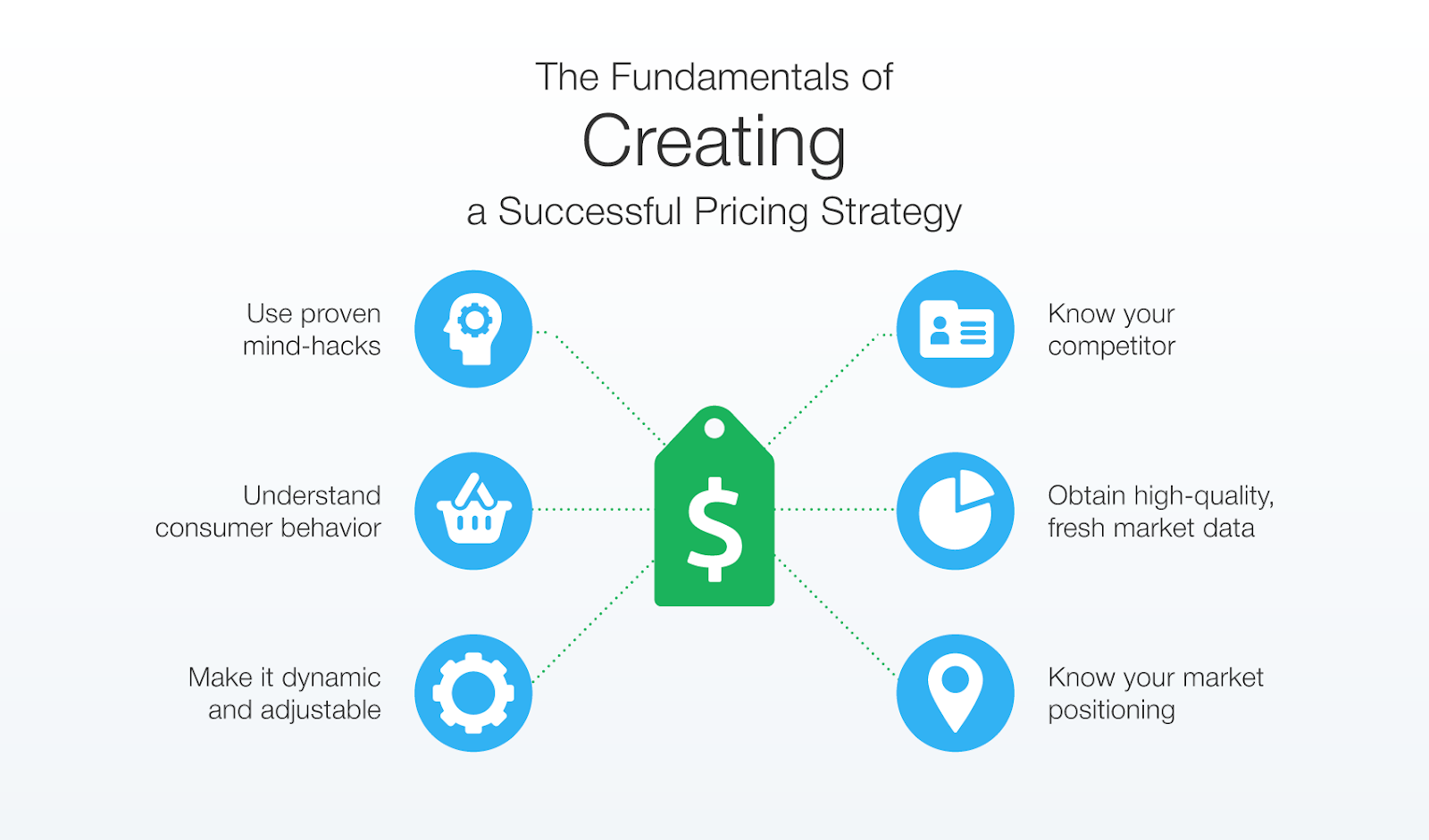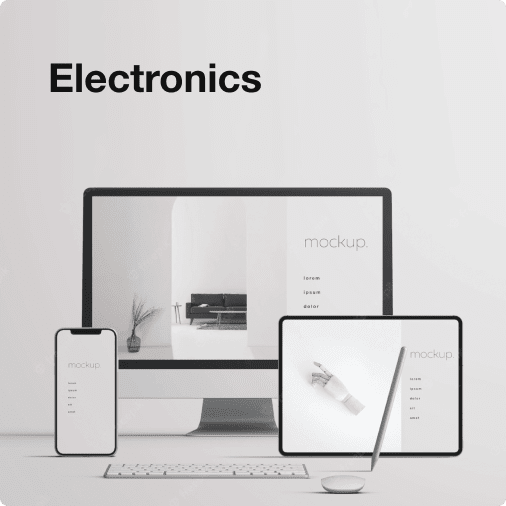Content navigation:
- What is Competitive Pricing and Pricing Analysis?
- The Difference between Pricing Analysis vs. Competitive Pricing Analysis
- Comprehending Competitive Pricing
- Why Is a Competitive Pricing Strategy Important for Pricing Analysis?
- Benefits of Competitive Pricing Analysis
- How to Implement a Competitive Pricing Analysis
- What Challenges May Occur With Competitive Pricing Analysis?
- Conclusion
What is Competitive Pricing and Pricing Analysis?
Competitive pricing analysis is an evaluation of the consumers' reaction to new prices using research based on historical data or polls. Most often, price analysis examines customers' responses to a price without considering the costs and potential profits for the business. After an initial price analysis, the pricing analyst team uses the findings along with the other pricing factors to craft an optimal offering.
A competitive pricing strategy is a pricing policy based on the use of competitors’ prices as a benchmark to set prices. This type of strategy is often referred to as competition-based or competitor-based pricing. In most cases, the business comes to a competitive pricing strategy after a cost-plus approach turns out to be no longer relevant.
What Is the Difference between Pricing Analysis vs. Competitive Pricing Analysis?
These terms are distinct and not interchangeable. A competitive pricing analysis focuses specifically on evaluating your competitors' pricing strategies and determining how to set your product's price to maintain competitiveness. In contrast, "pricing analysis" is a broader term encompassing considerations beyond competitors' prices. It takes into account factors such as consumer behavior and their willingness to pay. Essentially, a competitive pricing analysis is often a component within the broader framework of a pricing analysis.
How to Comprehend Competitive Pricing?
When determining the price for a product or service, businesses face three options: setting it below, at, or above the competition costs.
Opting for above-the-competition pricing entails creating an environment justifying the premium, such as offering generous payment terms or additional features. In this scenario, the business competes on quality rather than price to justify charging a premium.
A business might choose to set the price below the market, potentially incurring a loss, with the expectation that customers will purchase other products from them once exposed to additional offerings. The profitability of these other products can then offset the economic loss incurred on the below-market-priced product, a strategy commonly known as a loss leader.
Alternatively, a business can opt to charge the same price as its competitors or adhere to the prevailing market price. Despite selling an equivalent product at an equivalent price, the business may still seek to differentiate itself through strategic marketing efforts.
Why Is a Competitive Pricing Strategy Important for Pricing Analysis?
According to 2022 Statista research, more than 82% of buyers compare the offers of several stores in search of a better bargain. Retailers who can collect and analyze market data, map their position against competitors, and offer optimal prices are the companies that catch these buyers’ eyes first and foremost.
Competitive pricing is a strategy that helps businesses attract more customers by optimizing prices using competitor products and pricing data. A successful pricing analysis can significantly increase sales, result in better cooperation with suppliers, and boost revenue.
What Are the Benefits of Competitive Pricing Analysis?
There are several benefits of competitive pricing analysis, which include:
-
Increased profitability: Competitive pricing analysis can help businesses identify opportunities to increase their prices without losing market share. By understanding the prices of their competitors, businesses can price their products and services competitively while still maintaining profitability.
-
A better understanding of the market: Competitive pricing analysis allows businesses to gain a better understanding of their market and competitors. This understanding can help businesses develop more effective marketing and sales strategies, and identify areas where they can differentiate themselves from competitors.
-
Improved product positioning: Competitive pricing analysis can help businesses determine the best pricing strategy for their products and services. This can include identifying the optimal price points for different customer segments and determining the right price to position the product as a premium or value offering.
-
Faster response to market changes: By regularly monitoring competitor pricing and market trends, businesses can respond quickly to changes in the market. This can help them stay ahead of the competition and adapt to changing customer needs.
-
Better customer acquisition and retention: By offering competitive prices, businesses can attract new customers and retain existing ones. Customers are often price-sensitive, and offering competitive prices can be a critical factor in choosing one business over another.
Overall, pricing strategies based on the analysis of competitor prices can help businesses make better pricing decisions, increase profitability, and gain a competitive edge in their market.

How to Implement a Competitive Pricing Analysis?
1. Determine Quality of Data
Complete and accurate data is crucial to analyze competitor costs. We surveyed our clients from several different countries to determine the following criteria as crucial to high-quality data:
- Depth of comparisons. Retailers need to take everything into account regarding product information: color, technical characteristics, and other product attributes are vital for high-quality data and are also not available on product cards.
- Percentage of errors. Most data matching is done using automation and is prone to a degree of error as a result. Manual comparison enhances automatic solutions and ensures better results.
- The ratio of planned and delivered data. Data can be incomplete since the algorithm may lack information that is not available on the competitor’s website. This means that the amount of data estimated before collection may exceed the amount of usable data that is delivered.
- Constantly updated data. Retailers should use the data collected no later than two hours before repricing.
- Data delivery time. Product and pricing data should be delivered to the retailer’s internal system every 20-30 minutes to make comparison analysis more effective.
2. Define Data Parameters
Next, the company must determine important parameters of competitive data they want to collect and analyze for their pricing process. Just a few examples to illustrate what kind of parameters are typically monitored:
- Price Index. This displays the retailer’s position in the market for a given product or class of products over a certain time. The price index visualizes how market dynamics affect sales and delivers data on prices listed by competitors.
- Competitors’ promo activity. In the same study, Forrester Consulting indicated that at least a third of customers are trying to find discounts before buying an item. This means it is essential to continuously monitor discounts and sales of others in the industry to optimize promotional offers.
- Product availability. By monitoring competitors and their product stocks, retailers can adjust their prices based on the supply of an item or class of items on the market at a given point in time.
Many retailers think competitive pricing consists only of peer group analysis. However, competitive price analysis also requires a thorough study of internal company data (i.e. historical data) in addition to data revolving around competitors. It is impossible to set optimal prices and succeed with competition-driven pricing without having a profound knowledge of the market and your position in it as a retailer.
The abovementioned parameters are just a small part of the competitor price data that can be monitored by retailers. Depending on business goals and logic and rules used while repricing, you can monitor any kind of data, e.g. stock levels, sales volumes, eCommerce traffic, promotions, etc.
3. Categorize Competitors
Once retailers have thorough data about their competitors, they need to classify competitors according to several factors including but not limited to the target audience and product quality. There are three main categories that market competition can be divided into:
- Primary — direct competitors who pursue the same buyer category.
- Secondary — competitors who focus on upscale/downscale versions of the retailer’s assortment. Analyzing secondary-level competitors allows businesses to develop a broader idea of their place in the market and boost their strategic skills accordingly.
- Tertiary — companies selling products that are indirectly relevant to those of the retailer. Analyzing this level of competition helps retailers willing to expand their assortment.
Categorizing competitors makes market analysis less time-consuming and allows retailers to focus their attention in the right direction in terms of competition.
A data-driven approach could also be applied while defining and categorizing the competitors. If you are a mono-brand retailer or sell a very limited number of SKUs, you'd probably be able to categorize competitors manually. But for large sellers with thousands of products offered across different pricing zones, the smart competitors' analysis has no alternative.
Beyond that, each product's competitive landscape is unstable as other retailers change their strategy and new players enter the market. What it means is that competitive analysis and categorization are ongoing processes that should be done more or less often depending on the product type or market segment.
To cover this need, Competera offers a so-called 'True competitors' module enabling retailers to find the real impact every player has on particular SKU sales by analyzing retailers' and competitive historical data.
4. Perform a Smart Pricing Analysis
It could be easily done by using machine-based pricing tools. Modern retail companies are increasingly leaning towards algorithms to collect and analyze data. Machines have significant benefits over manual approaches:
- Improved accuracy
- Can process large amounts of complex data
- Scheduled delivery
- Provide precise pricing recommendations.
Arguably, the most important aspect of implementing automation into the pricing process is that it allows retail teams to switch from routine tasks to strategic tasks regarding pricing strategy and price management.
When it comes to automated pricing systems' implementation, most retailers are afraid of extra costs. The fact is that these solutions are instead a means of cost reduction. For example, Wiggle CRC managed not only to reduce the repricing time by 50% but also to get a full view of the market at lower costs. The latter was achieved mainly through monitoring marketplaces instead of competitors' websites.
If you want to get more tried and tested tips on reducing competitive data monitoring costs, watch the video below.
5. Track Competitors’ Online Activity
To have a better understanding of the market, retailers should monitor their competitors and their platforms such as official websites and social media accounts. There are several aspects businesses need to examine:
- Product descriptions
- Visual presentation
- Social media activity
- If the websites and social media accounts are mobile-friendly
- Customer support and feedback options
- Response rate
In addition, retailers can sign up for official newsletters and become a followers of their competitors on social media. Businesses need to understand what attracts clients to their competitors’ products.
These are several examples of how retailers can benefit from open-source information. The more key points they identify and analyze, the better their information will be to base important pricing decisions on.
What Challenges May Occur with Competitive Pricing Analysis?
Businesses encounter various challenges in employing competitive pricing analysis. A significant hurdle involves ensuring the accuracy of the analyzed data, which demands meticulous collection and examination from multiple sources, often a time-consuming and costly process prone to errors or inconsistencies. Limited data availability poses another obstacle, particularly for smaller businesses striving to gather ample information on competitors' pricing strategies, hampering their ability to compete with larger counterparts.
Identifying suitable competitors for analysis, especially in saturated markets, can be daunting. Merely examining competitors' prices in isolation may mislead, necessitating a comprehensive evaluation considering factors like product quality, customer service, and marketing strategies. Moreover, the dynamic nature of market conditions presents a challenge, demanding businesses to swiftly adapt to changes in competitors' pricing strategies for sustained competitiveness. While price competition solutions offer valuable insights, businesses must be cognizant of these challenges, taking measures such as refining data processes, investing in data acquisition tools, and considering broader market contexts to enhance the accuracy and utility of the analysis.
Conclusion
Creating a competitive pricing strategy from scratch is no easy feat. Many factors revolving around data, such as parameters and quality, must be carefully considered. Companies must decide whether they will utilize automation within their pricing process and if so, to what extent. Lastly, they also must thoroughly study their competitors to obtain a better understanding of their place in the market to excel in it truly.
FAQ
First, you define the data needed for price analysis as well as data quality criteria. Then you need to classify competitors according to several factors including but not limited to a target audience and product quality. Afterward, advanced math is used to outline the correlations between the competitors' and own prices.
Pricing models mark the approaches used by businesses to craft prices. Competition-based, cost-plus, or skimming pricing are examples of models that may be used solely or in combination with other models.









